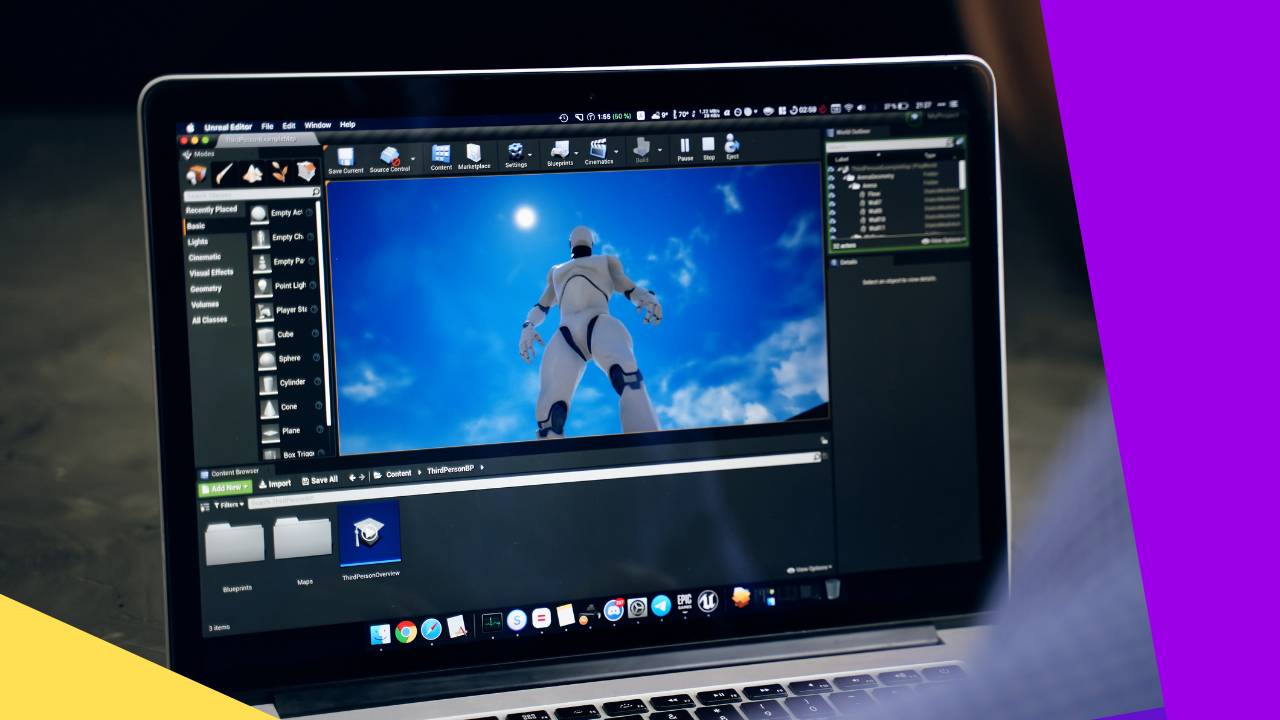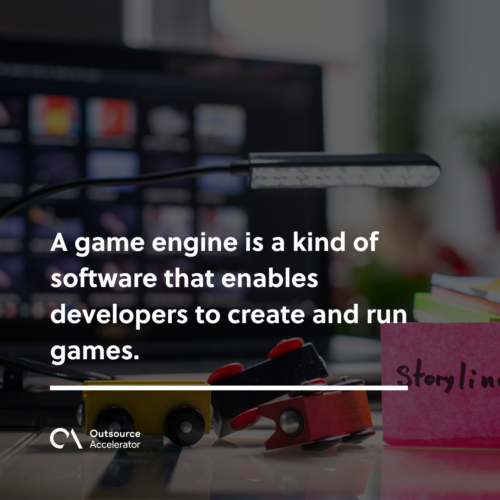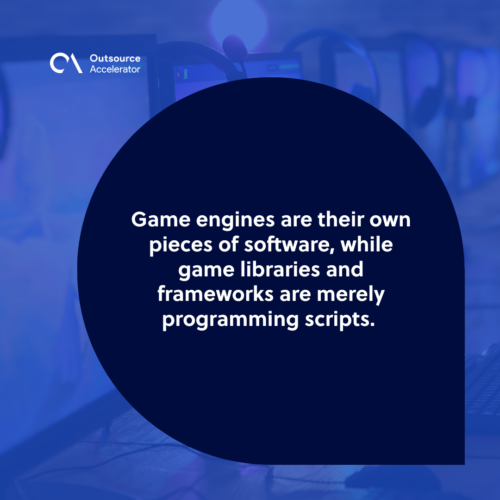Elements of a game engine

The gaming world has come a long way from Pac-Man. Games are as advanced as ever, especially in how they are created.
A game development process[1] must pass many metrics before the game is released.
Early games were created by individual rendering engines, each with the specific purpose of producing that one game.
Over time, the practice of these in-house engines was phased out, and commercially designed game engines that produce multiple kinds of games were introduced.
Once in a while, a company will still need to create its custom engine if its game requires it. However, the modern game engine has proven invaluable in the mass development of new and innovative games.
What is a game engine?
A game engine is a kind of software that enables developers to create and run games. The software comes equipped with special tools meant to reduce the tedium of game development by cutting down production times.
Game engines aren’t always the same, and each can provide different tools[2] depending on the kind of game they create. Still, all are described as “development environments” with software components that simplify and optimize the process for developers.
These are some of the tasks common to the majority of game engines, allowing developers to reduce coding efforts:
- Physics – A game engine should bring a balance between simulation quality and computing power limitations for its end user. Physics and immersion are crucial for games.
- Input – A common issue in cross-platform development, this concerns how a game responds to players’ actions and new devices.
- Visual assets processing – This is important for the look of the game. It includes lighting, shading, texture-mapping, and depth of field.
With those tasks automated, game creators can focus more on the greater mission of designing games to deliver unique user experiences.
To further optimize game development, you can also outsource game developers. MVP Asia Pacific can assemble a team of expert game developers as an expansion of your workforce.

Game engine vs. Game libraries and frameworks
The terms “game library” or “game framework” are often used interchangeably with game engines, but there are key differences in concept.
Many game engines are their own pieces of software, while game libraries and frameworks are merely programming scripts. The latter don’t build within their own program, but are imported into existing code editor programs.
Game libraries and frameworks are easier to integrate into projects as they are just suites of data and pre-programmed code. Many, however, can replicate the same benefits of game engines to a point.
While a passable option for many companies, it’s still worth investing in a game engine. You get a wider list of convenient tools, more powerful processing, and a reduction of source code writing.

Components of a game engine
In order to properly build games, game engines have to be equipped with these components that will ensure seamless development.
Input
This encompasses devices that will capture the player’s actions, ensuring that the game can actually be played. Game engines must be able to support the input of devices like a mouse, gamepad, or joystick.
The game engine handles input in two ways:
- Input events – the computer detects the player’s actions and triggers a custom code.
- Input polling – records position values, such as the physical tilt of a controller.
Artificial intelligence
Artificial intelligence (AI) plays a greater role than ever in game development and the gameplay itself. AI has allowed games to advance not only their software design but also their storytelling.
Ready-made scripts implement artificial intelligence into a game. The AI is responsible for providing recommendations based on a player’s behavior in the game.
Most game engines prepare a menu of responses that the game will perform depending on how the player acts.
Graphics engine
Also called the rendering engine, this component is responsible for the 2D or 3D rendering of the game’s visual graphics. A game’s graphics are crucial to its cosmetic look.
A gaming engine can bring a host of artistic features such as lighting effects, shadow, bump maps, and blending animation to really sell the immersion of the game graphics.
Physics engine
Physics is usually something we take for granted, especially for a game, but this is an important feature in providing the immersion of a game. Without gaming engines providing physics, the movement would just look uncanny and unnatural.
Game engines apply the physical component that we expect within the game activity. This includes velocity, acceleration, fluidity, and projectile motion.
Sound engine
The sound or audio engine controls the sound of a game. Audio files are integrated by the game engine technology into the code and are triggered by specific actions matching the gameplay.
Networking
The advent of the internet and globalization has also allowed games to be much more interactive.
Many games now support features like online multiplayer and social gaming to play with others. Many modern game engines support scripts and tools that will allow this as an option.
Why a game engine is important
Without game engines, developers must devote more time to tiresome and repetitive coding.
While these are crucial to every game’s functionality, most will agree that what matters more is the one-of-a-kind experience that a game brings.
Game engines facilitate the regular processes, letting developers have more time to focus on unique elements, such as character models, textures, and object interaction.
Game developers themselves are in high demand. Having their resources taken up by the work that game engines could do is wasteful when they could use that time to produce new games or extend existing games to new platforms.
References:
1. Game development process. Ramadan, R. and Widyani, Y., 2013, September. Game development life cycle guidelines. In 2013 International Conference on Advanced Computer Science and Information Systems (ICACSIS) (pp. 95-100). IEEE.
2. Different tools. Baba, S.A., Hussain, H. and Embi, Z.C., 2007. An overview of parameters of game engine. IEEE Multidisciplinary Engineering Education Magazine, 2(3), pp.10-12.







 Independent
Independent




